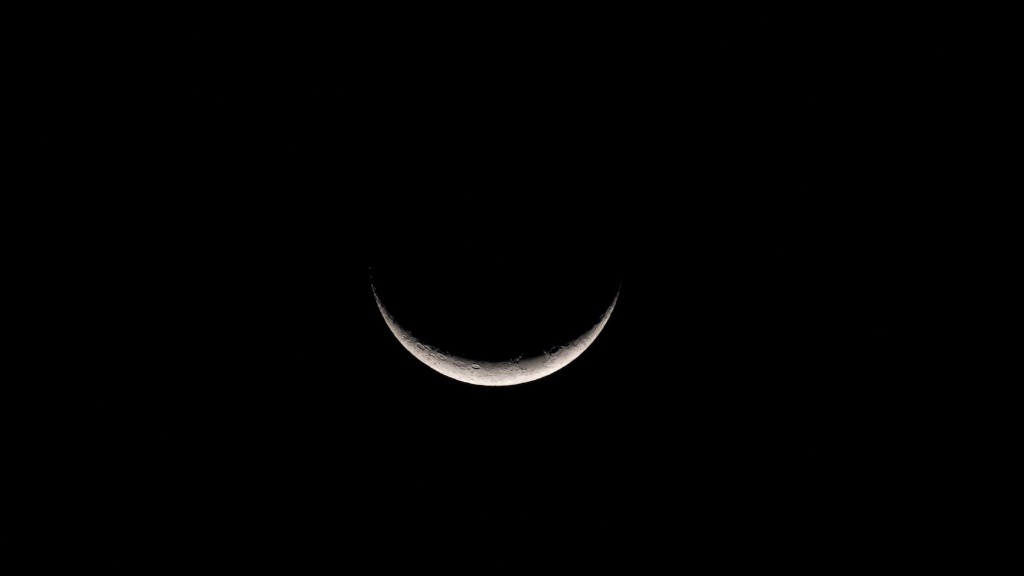Many people believe that dreams are another dimension. Dreams are a way for our subconscious to process information and deal with stressful events. Dreams can be a way to connect with our higher selves and receive guidance from our spiritual guides. Dreams can also be a way to relive happy memories or explore our wildest desires.
There is no scientific consensus on what Dreams actually are, but it is generally agreed that they are a connection to another dimension. Many people believe that Dreams are a way for our subconscious to process information and sort through memories. Some believe that Dreams are actually premonitions or glimpses into alternate futures. While there is no concrete evidence to support any of these claims, the fact remains that Dreams are still largely a mystery.
Are dreams multidimensional?
A dream can be a tapestry of both familiar and unfamiliar elements. The unfamiliar elements can represent things that the dreamer is curious about or wants to explore further. The familiar elements can provide a sense of comfort and stability in the dream. Ultimately, the dreamer can use the dream as a way to better understand themselves and the world around them.
The Dream Dimension was one of the Splinter Realms, as well as an astral realm, and a dimension linked to and shaped by humanity’s collective unconscious (it is literally a manifestation of the collective psyche of mankind), located within the Dreamtime, the collective unconsciousness of all sentient beings in the universe. It was a place where the dreaming mind could roam free, and where nightmares could become reality. It was also a place where the impossible could happen, and where the impossible was often commonplace.
Are dreams connected to reality
The realm of sleep and dreams has long been associated with strangeness: omens or symbols, unconscious impulses and fears. But this sometimes disturbing world of inner turmoil, fears and desires is grounded in our day-to-day experience, sleep researchers say.
Sleep and dreams are a normal part of our lives, and they can be a useful way to process the events of the day. Dreams can help us to work through our fears and desires, and to understand our own emotions.
However, sleep and dreams can also be a source of distress. If we are not getting enough sleep, or if we are under a lot of stress, our dreams can become more intense and disturbing. If we are dealing with a traumatic event, such as a death or a divorce, our dreams can be a way of working through our grief.
It is important to remember that dreams are not reality. They are our own personal way of understanding the world around us. If you are having difficulty understanding your dreams, or if they are causing you distress, it may be helpful to talk to a therapist or a dream analyst.
There’s the mind-bending possibility that many more dimensions exist out there According to string theory, one of the leading physics model of the last half century, the universe operates with 10 dimensions.
Can 2 Humans have the same dream?
Shared dreaming is a fascinating phenomenon that has been studied for centuries. The idea that two or more people can share the same dream environment is both intriguing and confusing. There is still much mystery surrounding how and why shared dreaming occurs, but there are some theories that attempt to explain it.
One theory suggests that shared dreaming is a way for people to connect with each other on a deeper level. Dreams are often seen as a way to access the subconscious mind, and by sharing dreams with others, we are able to tap into a part of ourselves that we may be otherwise unable to access.
Another theory posits that shared dreaming is a way for people to process information and experiences together. This theory suggests that when we dream, our brains are actually trying to make sense of the day’s events and sort through all the information we’ve taken in. By sharing dreams, we are effectively giving our brains a helping hand in this process.
Whatever the reason for shared dreaming, it is clear that it is a phenomenon that has the potential to be both powerful and enlightening.
It’s interesting to note that dreams often deal with issues of identity, because in many ways we are constantly trying to figure out who we are and what we need in life. Our dreams may reflect feelings of being unfulfilled or undervalued, which can be a reflection of our own beliefs and perspectives.
What dimension is real life?
It is important to note that we live in a world of three dimensions. We move through space, either left or right, forward or backward, up or down. Everything around us, from the houses we live in to the objects we use in everyday life, has three dimensions: height, length, and width.
This map provides a way to visualize how different dream experiences can be related to one another in terms of time and space. By understanding the relationships between these different elements, we can better understand the meaning of our dreams.
What dimension is our reality
In everyday life, we inhabit a space of three dimensions – a vast ‘cupboard’ with height, width and depth, well known for centuries. Less obviously, we can consider time as an additional, fourth dimension, as Einstein famously revealed.
With this in mind, it’s perhaps not surprising that our brains are hardwired to think in terms of three dimensions. This is evident in the way we describe the world around us and the way we navigate our way through space. It’s also evident in the way we process information and make decisions.
However, there are some situations where thinking in three dimensions isn’t sufficient. For example, when trying to visualize something that doesn’t exist in our physical world, such as a black hole. In these cases, we need to use our imagination to think in four or more dimensions.
Precognitive phenomena refers to the ability to see and predict future events. This can manifest in the form of dreams or visions. Precognitive dreams are the most widely reported occurrences of precognition.
Usually, a dream or vision can only be identified as precognitive after the putative event has taken place. When such an event occurs after a dream, it is said to have “broken the dream”. Sometimes, precognitive dreams may be symbolic in nature and may not predicted the future event with perfect accuracy. However, they can give a general sense or feeling about what is to come.
Precognitive abilities are often associated with psychic abilities. However, it is important to note that not all psychics have precognitive abilities and vice versa. Precognition is a natural ability that some people have and does not require any special training or skills.
What causes vivid dreams?
Scientists believe that dreams are a way for the brain to process information and sort through memories. Dreams are also thought to help with problem solving and creativity. While the exact cause of vivid dreams is not known, there are several theories.
One theory suggests that during REM sleep, the brain is more active and engaged in processing information than during non-REM sleep. This increased activity may lead to more vivid dreams.
Another theory suggests that dreams are more vivid when a person is sleep deprived. This is because the brain is trying to make up for lost sleep and is more active during REM sleep.
There are also some medical conditions that can cause vivid dreams, such as sleep apnea, narcolepsy, and medications. If you experience vivid dreams that are causing distress, please consult with a medical professional.
Dreams are often seen as a reflection of a person’s waking life. The continuity hypothesis states that dreams incorporate conscious experiences into their dream content. Dreams often appear as a patchwork of memory fragments rather than a straightforward replay of waking life.
Does the past still exist
Space-time is a mathematical model that helps us understand the relationships between matter, energy, and time. It is the fabric of the universe, and everything that exists occupies a space and has a time.
The idea of space-time is fairly new, and it has only been in the last century or so that we have really begun to wrap our heads around it. Albert Einstein’s theory of relativity showed us that space and time are not absolutes, but are relative to the observer. This led to the development of the space-time continuum, which is a model that encompasses all of space and time.
In short, space-time would contain the entire history of reality, with each past, present or future event occupying a clearly determined place in it, from the very beginning and for ever. The past would therefore still exist, just as the future already exists, but somewhere other than where we are now present.
This may seem like a difficult concept to grasp, but it is actually quite simple. Just think of it as a map of the universe. All of space and time is laid out before us, and we can see every event that has ever happened or will ever happen. We are just a small part
We are actually four dimensional. We are comprised of 4 distinct but integrated parts. Three of which are related to our physical experience – the body, heart and mind. The fourth is the dimension of consciousness or spirit.
How can we see other dimensions?
The findings, published in the journal Physical Review D, could help unlock some of the great mysteries of the cosmos, such as the nature of dark matter.
According to the theory of cosmic inflation, the universe underwent a period of rapid expansion in its early stages. This expansion stretched the fabric of space-time, creating fluctuations in the density of matter.
These density fluctuations gave rise to the large-scale structure of the universe that we see today, with galaxies and clusters of galaxies separated by vast empty regions.
The new study shows that the geometry of extra dimensions can have a significant impact on the distribution of matter in the universe.
If extra dimensions exist, they would be curled up into very small shapes. The size and shape of these extra dimensions would determine the distribution of energy released during the inflationary period.
By studying the cosmic microwave background (CMB), a relic of the early universe, researchers were able to reconstruct the geometry of extra dimensions.
They found that if extra dimensions exist, they are most likely to be curled up into very small, compact shapes.
This is an exciting result that could help us to better understand the nature of dark matter and the early universe.
If you and a friend share a dream, it’s a sign that you’re emotionally close. You two operate on the same wavelength – literally – and are essentially haunting each other’s subconscious. You’re connected through more than just shared experiences and similar coping mechanisms.
Final Words
In theory, dreams could be another dimension. Dreams are a product of the brain, and the brain is a physical organ. It’s possible that when we dream, we’re actually accessing another dimension that exists beyond our physical reality.
There is much debate on whether or not dreams are another dimension. Some say that dreams are our subconscious mind working through our fears and desires. Others say that dreams are a gateway to another dimension where our true selves reside. There is no concrete evidence to support either claim. However, the idea that dreams are another dimension is an intriguing one. It is possible that dreams are a way for our souls to travel to different places and gain knowledge that we would not otherwise have.





